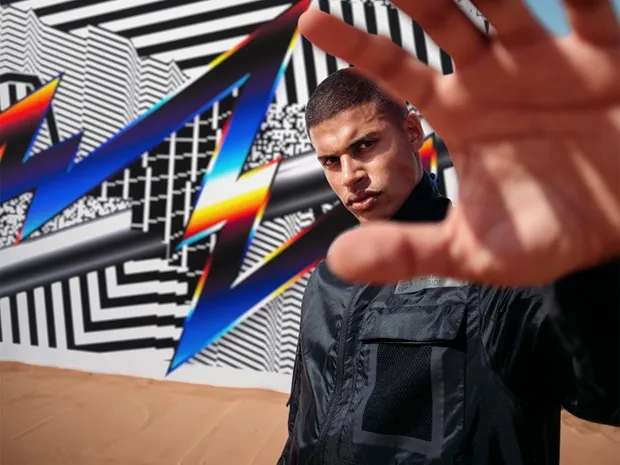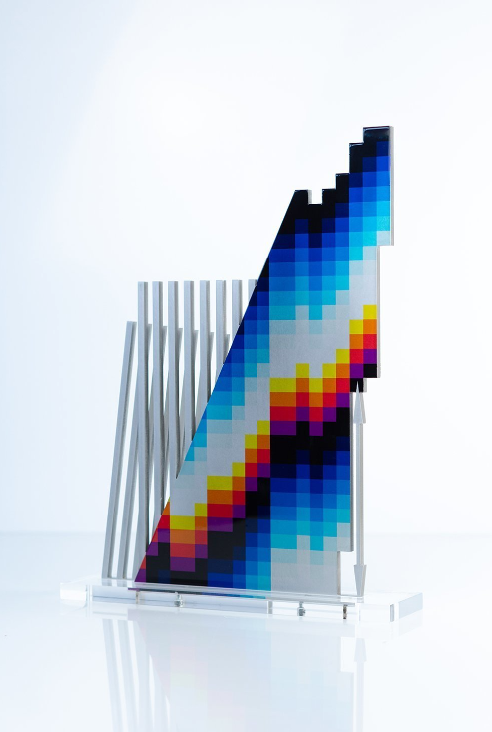
Felipe Pantone
Buy original Felipe Pantone artworks from ArtLife, including signed prints from across his career. Learn more about Felipe Pantone life and work here.
Artwork
Biography
Felipe Pantone (also known as Pant1 or Pant) was born in Buenos Aires, Argentina in 1986. His passion for art emerged early, despite his family having no involvement or enthusiasm for the art — his father was an ironworker. Felipe recalls drawing Mortal Kombat characters and 80s heavy metal band logos as a child. When he was 10, his family moved to a small town in the southeast of Spain, and two years later he began illicitly experimenting with graffiti. He eventually became a member of the legendary crew Ultra Boyz, known for their futuristic style.
Felipe’s teenage years were formative and attracted him to the art sphere. Pantone isn’t his real name, though — it grew out of coincidence. He began his career by graffitiing letters and tags, choosing the name ‘Pant’. Later on, he added the classic graffiti ‘One’ at the end of it, forming his now well-known name ‘Pant One’ or Pantone. At the time, the artist was unaware of the famous company with the same name, later adding his real name, Felipe.
Pantone spent a year in England studying art, but felt uninspired and abandoned his course. Instead, he graduated with a Fine Art degree from Valencia, where he resides today. Felipe still sees his biggest goal as fully shedding his academic training and emerging as a free artist.
Even though Felipe Pantone started his career spraying typical graffiti art (especially handstyle) his works quickly developed into more complex and impressive pieces. Pantone is now known for his versatility, having created art of every kind, from graffiti, to paintings, sculptures, murals and even cars and watches.
Pantone began showing his work in galleries in 2006 and has since featured in many notable locations, including the Mesa Contemporary Arts Center in Arizona, Long Beach Museum of Art, and Palais de Tokyo. In 2017, he painted a 17-storey mural for a building in Lisbon, making it the largest in Portugal.
Felipe is part of the kinetic and op art movements, influenced by giants like Carlos Cruz-Diez, Victor Vasarely and Tomasello. In his art, geometric shapes are injected with neon colors in an otherwise monochromatic image, boldly blending graphic design elements with traditional graffiti.
Pantone sees art as a meditation on our consumption of digital information. The internet is central to his art, representing his generation of children learning and growing online. His themes include movement, time, saturation, alienation, destruction and reconstruction, dealing with questions about transformation, the digital revolution, and past versus present versus future.
Pantone uses 3D-modeling software to help him create the glitch-like effect that is so synonymous with his work. This represents the inevitable malfunctions at the intersection of human and machine. The works are interactive, producing a feeling of vibration as the viewer moves around, according to their position in relation to it.
Philosophical questions regarding the role of graffiti in the physical space as well as the art world have always been central to Pantone’s approach. When one of his sprayed artworks on a shop front was painted over the next day, he decided to sketch again, this time using a classic calligraphic style. ‘You don’t wanna buff this, do you?’ was written in script at the same location, and this time it wasn’t removed. This led to him spraying a series of provocative cursive statements, for example: ‘Love calligraphy, hate graffiti?’.
According to Pantone, graffiti is to art as Twitter is to newspapers. It is a reaction or response to the traditional, produced by the masses, working in a more immediate and dynamic way. This may scare the traditionalists, but to him, it’s the essence of progress. His entire aesthetic draws from the idea that our world is ephemeral, so art should be too.
Pantone’s rising acclaim is on an upward trajectory, with striking optical illusion street art installations that are both dramatic and beautiful. We have some of his more unique original pieces up for sale, for example, his sculpture Optichromie Dimensional 3S featuring his recognizable glitching style.Please contact us if you require any assistance buying Felipe Pantone artworks and we’ll be happy to address any queries you may have.
